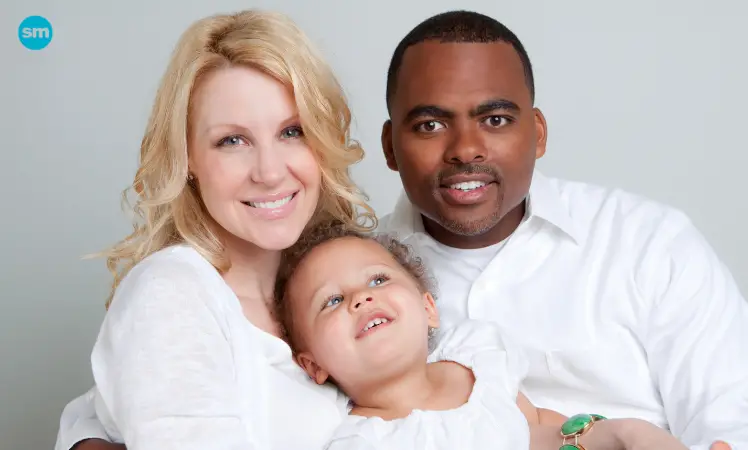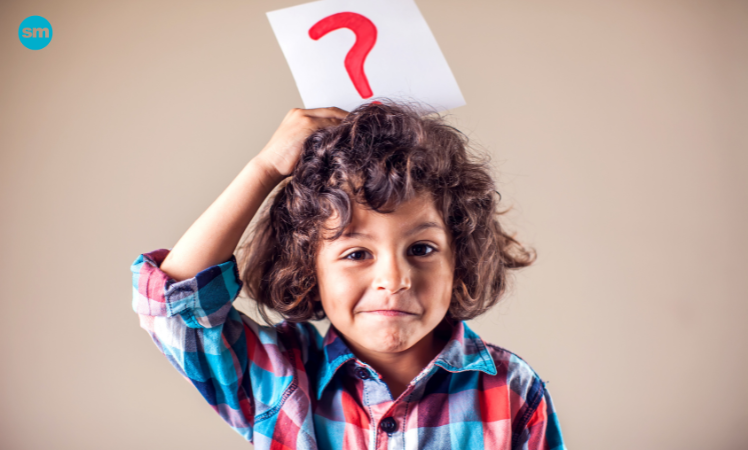Last Updated on August 17, 2023 by Lori Pace
Your children are biracial kids if you and your partner are from different races. It is not something you may be aware of, but biracial children face unique challenges such as discrimination regarding their racial self identification. Your child can be confident in society if you help them with these helpful tips. Your child may experience racism or identity crisis as a result of having a biracial identity. Keep reading to learn more about parenting biracial kids.
Eight Tips On Raising Biracial Kids
Love doesn’t discriminate against race, skin colour, or language. You know that the strong bond you shared with your partner is something you want to pass on.
It is common to see biracial parents raising a child that is well-versed in both cultures. Sometimes parents don’t know how to help their child accept his or her mixed identity. Biracial kids can be influenced by the cultural aspects of their parents. A parent who is more assertive and interested in sharing their cultural knowledge and experiences may influence the child.
Talk To Your Biracial Kids About Skin Colour
Your child will be able to tell the difference between the skin colour and the other races if he or she is biracial.
- Questions about the colour of your child’s skin is a normal thing
It may not be something you want to discuss openly, especially with family members or strangers. Your skin may be one colour. However, your partner might have a different colour and your child could have a completely different skin tone. Your child may be confused by this situation and try to understand why the skin colours are different when you’re all from the same family.
- Your child’s curiosity is not something to take offence at
Do not ask your child to avoid discussing it. Instead, be very normal in how you answer the question. Keep in mind that your child may not be able to comprehend the concept of colour so make sure you answer as normal as possible, while keeping their age in consideration. Children will never feel comfortable and confident in their skin unless parents ask these questions.
- It is never too late for your child to have a ‘race’ conversation
Even at three years old, your child will begin to notice differences in traits. Sometimes as simple as skin color can be the first thing he notices. Ask your child about it, or bring up the subject yourself. It should not be considered a serious matter. Talking about skin color, race, or facial features should not be considered taboo by your child. Instead, make it as normal as possible.
Encourage Your Child To Accept Their Diverse Features
Many biracial children inherit certain features from their parents and some from their grandparents. This means that they are a mixture of both. It isn’t something that is natural, but it can intrigue strangers who might ask about your child’s ethnicity.
There will be difference in their style
You may notice that your child has a different hair texture, hair style, eyes shape, skin colour, or mouth shape. Your child should know that these unique features are beneficial because they bring together the goodness from two different cultures.
Many people will doubt your child’s mixed-racial identity
A parent who is black may have a child with a white child, while a parent who is dark may have a child with a darker skin tone. Explain to your child it’s possible for people to be confused, especially when they are just meeting you for the first time. Your child should be able to face such situations without becoming angry or upset.
Let Your Child Choose Their Own Cultural Identity
It’s normal for your child one day to be interested in your culture, and then the next day to want to identify themselves with your partner’s culture. Allow your child to explore the world and experience it firsthand. It is important to encourage your child to be themselves, to do what makes him or her feel most happy and comfortable.
Don’t make your child’s cultural preferences an ego-tussle between your partner and you
Talk to your child about your culture and share your knowledge with him. Your child should be able to participate in the culture of your partner if he wants to.
Your Child Can Feel Confident And Happy As A Biracial Person
You may find that your child needs more moral support than others to help them feel confident, particularly if they are dealing with biracial issues.
Strangers may be interested in your child’s appearances
They may ask questions that are rude or inaccurate. Although you might deal with it in a mature and more mature manner, it can cause awkwardness and confusion for your child.
Explain to your child that not all children of biracial descent are the same
This is why it is possible for people to ask questions about their own race. Your child should be able to explain what biracial is and why it is so special to have two cultures.
You may notice that your child is different from you or your partner
This is a normal part of being biracial. It is not something to be ashamed of. If someone is shocked by your child’s disclosures about your culture or racial heritage, tell them to not be offended. Your child should be proud and not hide his biracial heritage from others.
Your Child Can Learn To Relate To Other Children Of Mixed Race Families
Many people believe that mixed-race children grow up confused and disoriented. These myths should be dispelled, especially when it comes to your child.
Give your child examples of famous people with mixed racial backgrounds who have gone on to be successful and famous. You can name Halle Berry and Tiger Woods as well as Keanu Reeves.
Teach them that children of biracial descent are socially accepted and confident
Your child should be taught that biracial parents do not make you different. This does not mean that your child is different from other children of the same ethnicity. Both situations should not be feared, but they should be taught to your child.
You can even watch movies together that feature multi-racial families and biracial children. You can also give your child books about biracial children, and why it is so much fun to have both.
Select A School That Welcomes Students From All Ethnic Backgrounds
The perception of your child’s biracial identity will be influenced by his school and other schoolmates. Your child will feel more at home if he or she is enrolled in a school that has children from diverse backgrounds. Your child will benefit from being around children of different races and cultures, including biracial ones.
Talk to the Teachers and School Management
Before you send your child to school, make sure you talk with the teachers and management about the school’s racial tolerance. Schools may have strict policies regarding bullying and racism. Talk about the subject with your child at school.
Your child can be prepared to deal with some comments he might hear from classmates during his first days of school. Many biracial children are multi-ethnic, so it can be difficult for children to grasp the differences between ethnicities. Your child may be asked about their racial identity and origin by other children at school or teachers.
Prepare for Your Child’s Questions
You should prepare your child to answer such questions. Explain to your child that such questions are normal and expected. It is not a matter to be offended, tell your child. Your child could use this situation to break the ice.
Select A Multi-Racial Area For Your Biracial Kids
Choose a location or neighbourhood that is home to multiracial families. Your child will be more comfortable accepting his mixed race identity if he sees other biracial children every day.
It is possible for your child, even if you live in a multicultural community, to encounter racism elsewhere. It is important to let your child know that there are other biracial children and that it is not unusual for them to face racism.
Living in a multiracial neighbourhood or community will ensure that your child doesn’t feel alienated or stared at by anyone, even if he is young. This will allow your child to become comfortable with the idea that he or she is biracial.
Encourage Your Biracial Kids To Stand Up For Racism
It is possible that your child doesn’t understand the concept yet. However, it is important to teach your child when to protest and how to stop asking intrusive questions. Teach your child about anti-racism. When it makes your child feel uncomfortable, this is one of the best ways to teach them how to say no to people who ask them about their race, ethnicity, or looks.
Your child should be able to understand prejudice if they are older. No one should make rude comments or inappropriate remarks about race, ethnicity, or cultural background to your child, no matter how casual or fun. Even if it seems like a harmless comment, it can quickly turn into a racist attack. It is important to end such conversations immediately.
Your partner and you will support your child in fighting racism. You can also find a school counsellor who can help your child deal with the trauma of a racist comment or incident.




